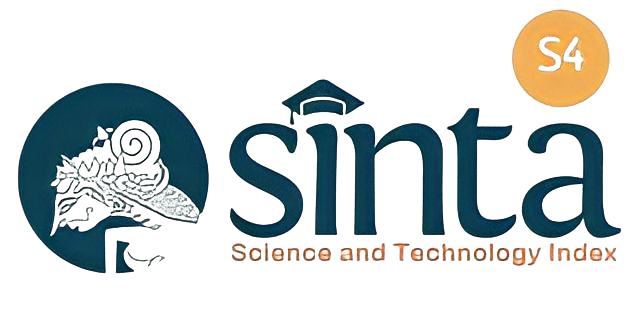Prediksi Employee Churn Dengan Uplift Modeling Menggunakan Algoritma Logistic Regression
DOI:
https://doi.org/10.34012/jutikomp.v3i2.1645Keywords:
Employee Churn, Uplift Modeling, Logistic Regression, Lai’s Generalized Weighted Uplift MethodAbstract
Pada sebuah perusahaan, karyawan merupakan aset yang berharga dan dapat menunjang kesuksesan perusahaan tersebut. Namun, hilangnya tenaga kerja dapat merugikan perusahaan. Kondisi ini disebut dengan Employee Churn. Salah satu solusi untuk mengatasi Employee Churn adalah dengan menerapkan model Uplift Modeling. Dalam penelitian ini, penulis menganalisa penerapan Logistic Regression terhadap Uplift Modeling dalam permasalahan Employee Churn. Data yang diteliti adalah data karyawan dari IBM HR Analytics. Hasil prediksi pada penelitian ini mendapat akurasi sebesar 64,40%, sedangkan hasil preskripsi menghasilkan hasil yang cukup baik apabila menerapkan waktu kerja tambahan pada karyawan. Berdasarkan hasil yang didapat, diketahui bahwa para karyawan justru cenderung bertahan di perusahaan apabila diberikan waktu kerja tambahan.
References
S. Kim, L. Tam, J.-N. Kim, and Y. Rhee, “Determinants of employee turnover intention,” Corp. Commun. An Int. J., 2017.
D. S. Sisodia, S. Vishwakarma, and A. Pujahari, “Evaluation of machine learning models for employee churn prediction,” in 2017 International Conference on Inventive Computing and Informatics (ICICI), 2017, pp. 1016– 1020.
İ. O. Yiğit and H. Shourabizadeh, “An approach for predicting employee churn by using data mining,” in 2017 International Artificial Intelligence and Data Processing Symposium (IDAP), 2017, pp. 1–4.
D. K. Srivastava and P. Nair, “Employee attrition analysis using predictive techniques,” in International Conference on Information and Communication Technology for Intelligent Systems, 2017, pp. 293–300.
J. M. Kirimi and C. A. Moturi, “Application of data mining classification in employee performance prediction,” Int. J. Comput. Appl., vol. 146, no. 7, pp. 28–35, 2016.
M. He, D. Shen, Y. Zhu, R. He, T. Wang, and Z. Zhang, “Career Trajectory Prediction based on CNN,” in 2019 IEEE International Conference on Service Operations and Logistics, and Informatics (SOLI), 2019, pp. 22–26.
S. H. Dolatabadi and F. Keynia, “Designing of customer and employee churn prediction model based on data mining method and neural predictor,” in 2017 2nd International Conference on Computer and Communication Systems (ICCCS), 2017, pp. 74–77.
A. Alamsyah and N. Salma, “A Comparative Study of Employee Churn Prediction Model,” in 2018 4th International Conference on Science and Technology (ICST), 2018, pp. 1–4.
E. Rombaut and M.-A. Guerry, “The effectiveness of employee retention through an uplift modeling approach,” Int. J. Manpow., 2020.
D. Wijaya, J. H. Ds, B. Pasaribu, S. Barus, and A. Dharma, “Uplift modeling VS conventional predictive model : A reliable machine learning model to solve employee turnover,” Int. J. Artif. Intell. Res., vol. 4, no. 2, 2020.
J. L. Sánchez, J. L. Marcos, M. T. De la Fuente, and A. Castro, “A logistic regression model applied to short term forecast of hail risk,” Phys. Chem. Earth, vol. 23, no. 5–6, pp. 645–648, 1998.
A. De Caigny, K. Coussement, and K. W. De Bock, “A new hybrid classification algorithm for customer churn prediction based on logistic regression and decision trees,” Eur. J. Oper. Res., vol. 269, no. 2, pp. 760– 772, 2018.
P. K. Dalvi, S. K. Khandge, A. Deomore, A. Bankar, and V. A. Kanade, “Analysis of customer churn prediction in telecom industry using decision trees and logistic regression,” in 2016 Symposium on Colossal Data Analysis and Networking (CDAN), 2016, pp. 1–4.
M. E. Urrutia-Aguilar, R. Fuentes-García, V. D. M. Martínez, E. Beck, S. O. León, and R. Guevara-Guzmán, “Logistic regression model for the academic performance of first-year medical students in the biomedical area,” Creat. Educ., vol. 7, no. 15, p. 2202, 2016.
D. Olaya, J. Vásquez, S. Maldonado, J. Miranda, and W. Verbeke, “Uplift Modeling for preventing student dropout in higher education,” Decis. Support Syst., p. 113320, 2020.
P. Rzepakowski and S. Jaroszewicz, “Uplift modeling in direct marketing,” J. Telecommun. Inf. Technol., pp. 43–50, 2012.
S. Kawanaka and D. Moriwaki, “Uplift modeling for location-based online advertising,” in Proceedings of the 3rd ACM SIGSPATIAL International Workshop on Location-based Recommendations, Geosocial Networks and Geoadvertising, 2019, pp. 1–4.
Pavansubhash, “IBM HR Analytics Employee Attrition & Performance,” Kaggle - Database: Open Database, Contents: Database Contents, 2017. https://www.kaggle.com/pavansubhasht/ibm-hr-analytics-attrition-Dataset (accessed Oct. 09, 2020).
M. Maisuradze, “Predictive Analysis On The Example Of Employee Turnover,” Tallinn Univ. Technol., 2017.
K. Sehgal, H. Bindra, A. Batra, and R. Jain, “Prediction of Employee Attrition Using GWO and PSO Optimised Models of C5. 0 Used with Association Rules and Analysis of Optimisers,” in Innovations in Computer Science and Engineering, Springer, 2019, pp. 1–8.
S. S. Alduayj and K. Rajpoot, “Predicting employee attrition using machine learning,” in 2018 International Conference on Innovations in Information Technology (IIT), 2018, pp. 93–98.
K. G. King, “Data analytics in human resources: A case study and critical review,” Hum. Resour. Dev. Rev., vol. 15, no. 4, pp. 487–495, 2016.
A. Shaar, T. Abdessalem, and O. Segard, “Pessimistic uplift modeling,” 2016.
A. Betlei, E. Diemert, and M.-R. Amini, “Uplift prediction with dependent feature representation in imbalanced treatment and control conditions,” in International Conference on Neural Information Processing, 2018, pp. 47–57.
R. Gubela, A. Bequé, S. Lessmann, and F. Gebert, “Conversion uplift in ecommerce: A systematic benchmark of modeling strategies,” Int. J. Inf. Technol. Decis. Mak., vol. 18, no. 03, pp. 747–791, 2019.
F. Devriendt, J. Berrevoets, and W. Verbeke, “Why you should stop predicting customer churn and start using uplift models,” Inf. Sci. (Ny)., 2019.
Downloads
Published
How to Cite
Issue
Section
License
Copyright (c) 2021 Jovan Kinoto, Jansen Liharma Damanik, Erwin Tri Saputra Situmorang, Josua Siregar, Mawaddah Harahap

This work is licensed under a Creative Commons Attribution-ShareAlike 4.0 International License.
- Hak Cipta atas naskah-naskah karya ilmiah di dalam Jurnal ini dipegang oleh Penulis.
- Penulis menyerahkan hak saat pertama kali mempublikasi Naskah karya ilmiahnya dan secara bersamaan Penulis memberikan izin/lisensi dengan mengacu pada Creative Commons Attribution-ShareAlike 4.0 International License kepada pihak lain untuk menyebarkan karya ilmiahnya tersebut dengan tetap mencantumkan penghargaan bagi penulis dan Jurnal Teknologi dan Ilmu Komputer Prima sebagai media Publikasi pertama atas karya tersebut.
- Hal-hal yang berkaitan dengan non-eksklusivitas pendistribusian Jurnal yang menerbitkan karya ilmiah penulis dapat diperjanjikan secara terpisah (contoh: permintaan untuk menempatkan karya yang dimaksud pada perpustakaan suatu institusi atau menerbitkannya sebagai buku) dengan Penulis sebagai salah satu pihak perjanjian dan dengan penghargaan pada Jurnal Teknologi dan Ilmu Komputer Prima sebagai media publikasi pertama atas karya dimaksud.
- Penulis dapat dan diharapkan untuk mengumumkan karyanya secara online (misalnya pada Repositori atau pada laman Organisai/Institusinya) sejak sebelum dan selama proses pengumpulan naskah, sebab upaya tersebut dapat meningkatkan pertukaran citasi lebih awal dan dengan cakupan yang lebih luas.








